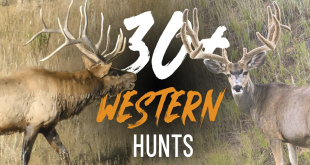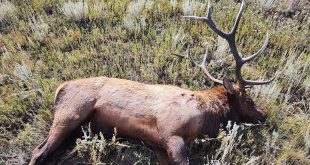
Tips For Writing A Great Story
So you have some great pictures of your trophy and it is now time to sit down and put words to the story. Here are some tips that will help you get the fingers moving on the keyboard and put together a written story that will help you get our editor’s attention!
1. Try to avoid the format of – “I couldn’t believe I was drawn for…” followed by a completely chronological story, ending with “thanks to.” This is an overly used format and takes too much time to edit for uniqueness.
2. Tell a story that is unique or engaging in some way. Reflect on what made the hunt memorable for you. Personalize it with your struggles, fears, joys and surprises. Share a few tips and tricks that helped you.
3. Put your personality into the writing. It’s a story – your story, not a dry report.
4. Transport the reader into the scene by being creatively descriptive (though not overly so) of the sights, sounds, smells, discomforts, etc. of the hunt.
5. Don’t worry if you aren’t a professional writer – our editor is and will touch up your story to make sure it reads well.
6. Try to avoid clichés and overuse of exclamation points or the exact time of day. Avoid quotation marks (except in dialogue), paragraphs longer than six sentences and “thanks” in the last paragraph that is unrelated to the story.
7. After finishing the story, take a long break with several days being best. Then revisit the story and find ways to improve it. Repeat this process multiple times. Ask your spouse or hunting partners for constructive comments.
8. Run a spelling/grammar check before submission and fix the marked portions.
Where Your Story Can Be Run
Now that you have your hunt of a lifetime written down and submitted along with your best pictures to our editor at [email protected] What happens next? The editor now has what he needs to evaluate your story and decide if it can be used in the journals. We do our best to communicate with every person who submits a story and let them know if we can, or can’t use it. Below are the feature placements we have available for your story in the journals, let us know in your communication if you have one in mind and we will let you know if it fits.
Feature Article – Ideally this piece will be around 1,500 words and speak to the heart of your experience. If you send us great images as well as your equipment list there is a chance that your story could be used in one of these placements. The more high resolution images the better!
My DIY – This piece should come in around 500 words and be distilled to the core of your hunt. To build these types of articles we need 6-10 high quality images as well as your equipment list to be featured in the article.
Successful Trophy Hunters – Have a few pictures but not a lot else to go with your hunt? This is the best place for us to feature your trophy. When you submit we need 1 or 2 of your best photos, the state the animal was harvested in, bow/gun, hunter’s full name, short hunt summary and completed Contact Information portion of the Equipment List.
Younger Generation – These are some of our favorite pieces to include in every journal, what could be better than sharing trophies from the next generation of western hunters? When you submit your content please include 2-6 of the best photos of you and your trophy and a quick summary of 150 words or less about the trophy, state harvested, bow/rifle, hunter’s full name and any unique circumstances of the hunt. Also, include the complete Contact Information portion of the Equipment List.
Good luck this fall and as always we are looking forward to seeing what you were able to put on the ground!
 Eastmans' Official Blog | Mule Deer, Antelope, Elk Hunting and Bowhunting Magazine | Eastmans' Hunting Journals
Eastmans' Official Blog | Mule Deer, Antelope, Elk Hunting and Bowhunting Magazine | Eastmans' Hunting Journals





One comment
Pingback: How To Submit Your Story: Part 3, The Written Word | Hunting Fishing